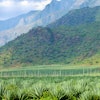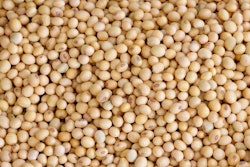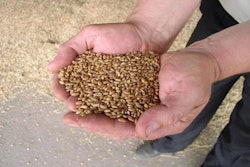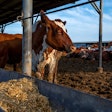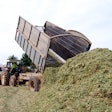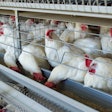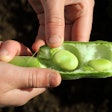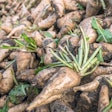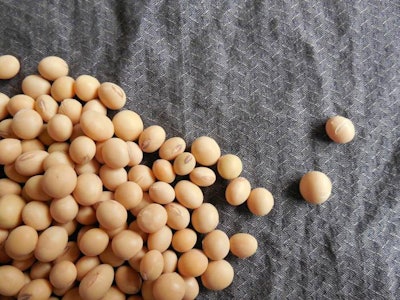
A method of processing full-fat soybeans in small to medium farms
Dry roasting is an inexpensive on-farm heat treatment of whole (full-fat) soybeans that can be employed in small to medium operations that cannot afford buying an extruder. It is also recommended when such operations grow their own soybeans, as this lowers costs even further.
In principle, some heating of soybeans – either whole or defatted – is required to destroy protease inhibitors that reduce protein digestibility and other anti-nutritional factors. With a few notable exceptions, soybeans must be heat processed for all farm animal feeds. Overheating, however, significantly reduces protein quality because it renders amino acids unavailable for metabolism. In contrast, under-heating is equally detrimental to animal performance because it leaves sufficient anti-nutritional factors intact to cause problems. Overheating is a common problem with roasting, whereas underrating is an indication of cost savings measures.
Finding the optimal roasting conditions in terms of temperature, time and moisture are of paramount importance in the final quality of the product. In most cases, equipment manufacturers provide such conditions but, even then, local adjustments might be required. Further, university research in the U.S. have determined optimum roasting conditions for full-fat soybeans destined to be used in piglet feeds (these conditions should logically be sufficient for broiler feeds as well). In that study, the beans were brought to a dry matter content of 80% or 90% and then roasted at 110 degrees Celsius (60 seconds) or 125 degrees Celsius (90 seconds). Then feeds based on normal (heat-solvent) soybean meal (25%), raw soybeans (40%) and heat-treated soybeans (40%) were fed to 5-kg pigs for 35 days.
As expected, raw soybeans containing excessive amounts of trypsin inhibitor drastically depressed growth performance compared with control pigs that received the normal soybean meal-based diet. Heating 90% dry matter soybeans at 110 degrees Celsius was not effective in restoring growth performance of pigs because high levels of trypsin inhibitor persisted. However, heating 90% dry matter soybeans to 125 degrees Celsius partially restored performance. Soybeans of reduced moisture required lower temperatures to inactivate trypsin inhibitor, but performance was improved with increasing processing temperatures. Apparently, temperatures higher than 125 degrees Celsius would be needed to fully inactivate anti-nutritional factors in 80% dry matter soybeans, whereas even higher temperatures would be needed for 90% dry matter soybeans. The latter would probably result in significant protein deterioration.
| Temperature (C) | Soybean meal | Raw soybeans | 110 | 110 | 125 | 125 |
| Dry matter (%) | 90 | 80 | 90 | 80 | ||
| Weight gain (g/day) | 330a | 80b | 60b | 130c | 170c | 250d |
| Feed intake (g/day) | 590a | 330b | 320b | 410b | 390b | 550b |
| Trypsin inhibitor (mg/g) | 3 | 54 | 40 | 24 | 23 | 9 |
| Urease (units Delta-pH) | 0.10 | 1.97 | 1.82 | 1.30 | 0.55 | 0.25 |
Effects of dry matter content on trypsin inhibitor activity and urease activity in heat-treated soybeans fed to weaned piglets. Animal Feed Science and Technology 87:105-115. Data means within a row with different superscript differ at P<0.05. (Source: White CE, Campbell DR, and McDowell LR., 2000)
Nutritionists often recommend feeding extruded full-fat soybean meal in young pigs, or a limited amount of solvent extracted soybean meal along with ample quantities of soy protein concentrate. Dry roasted soybeans are best reserved for older pigs as these are more resistant to anti-nutritional factors. The same approach is followed for broilers and layers. At sensitive ages (young birds, peak laying) higher quality protein sources are recommended, whereas at less sensitive ages (older birds, in general) dry roasted soybeans can be tolerated better.
It should also be mentioned that another benefit of dry roasting soybeans is that there is no need to add additional oil/fat in feeds that contain them. This can be a significant advantage for small to medium farms that want to avoid another expense in installing an oil/fat mixing capability to their feed manufacturing system.

